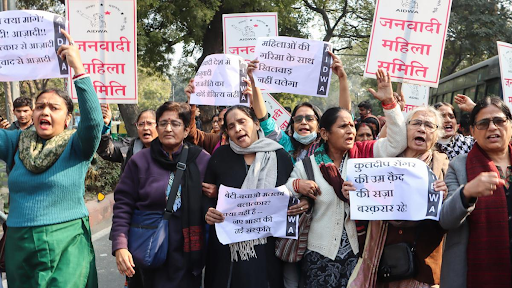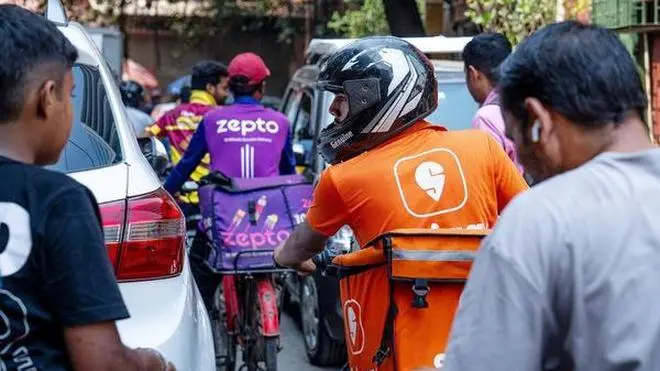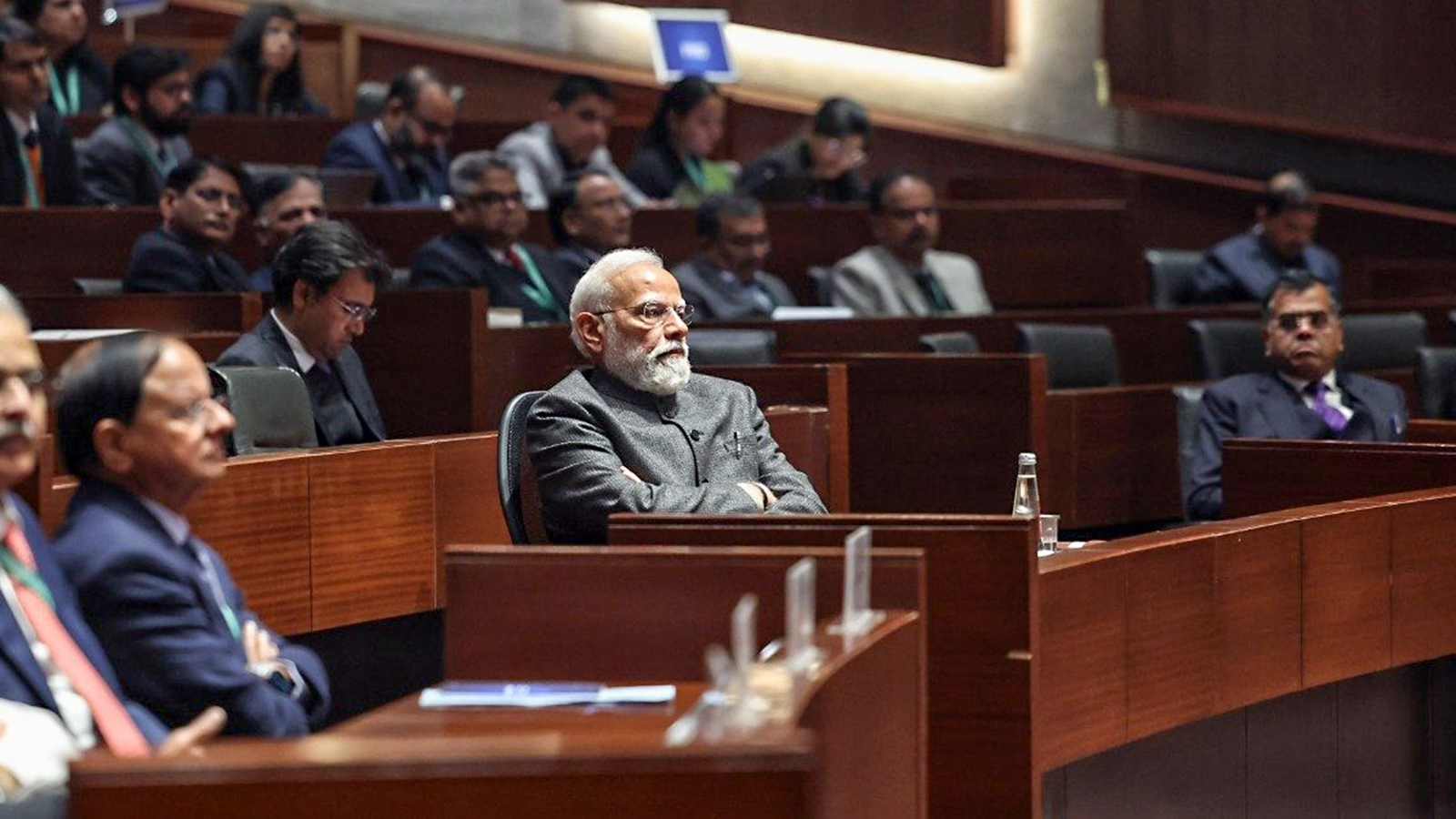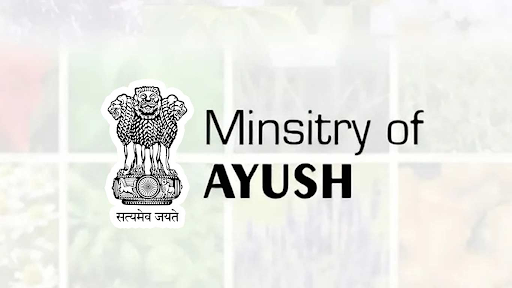Description
_Rules,_2024.jpg)
Disclaimer: Copyright infringement not intended.
Context
- The Union Government notified the rules of the Citizenship Amendment Act (CAA) 2019.
CAA
- The CAA was enacted in December 2019 and came into force on January 10, 2020. However, the Act could not be implemented as the rules were not notified. Enactment of the law drew criticism from a certain section and opposition parties, who dubbed the Act as discriminatory and sought for its rollback.
- The 2019 Act sparked intense protests across the nation and was kept in cold storage for more than four years.
- With the unveiling of these rules, known as the Citizenship (Amendment) Rules, 2024, people eligible under CAA-2019 can now apply for Indian citizenship, marking a pivotal step in providing refuge to the persecuted.
Who can apply for citizenship under CAA 2019?
- Individuals who migrated to India before December 31, 2014, from Pakistan, Afghanistan, and Bangladesh due to “religious persecution" and belong to six religious minorities- Hindu, Sikh, Buddhist, Jain, Parsi, and Christian are eligible to get citizenship under the Citizenship Amendment Act (CAA) 2019.
- Currently, Indian citizenship is granted to those born in India or who have lived in the country for at least 11 years. The proposed amendment also includes a provision for the cancellation of Overseas Citizen of India (OCI) registration if the OCI cardholder violates any provision of the Citizenship Act or any other applicable law.
Where CAA does not apply
- The amendments introduced by CAA do not apply to areas covered by the Constitution’s sixth schedule.
- These are the autonomous tribal-dominated regions in Assam, Meghalaya, Tripura, and Mizoram. This means migrants belonging to the identified communities from Afghanistan, Bangladesh, and Pakistan based on religion can’t be given Indian citizenship if they are residents in these areas.
- CAA also does not apply to states with an inner-line permit (ILP) regime — primarily in North-East India. ILP is a special permit required for non-residents to enter and stay in these states for a limited period. ILP system is operational in Arunachal Pradesh, Mizoram, Nagaland, Manipur, Lakshadweep and Himachal Pradesh.
What changes with CAA
- The provisions of Citizenship Act of 1955 barred illegal migrants in India. Such persons who entered India without valid travel documents or entered with a valid travel document but stayed beyond the permitted period were defined as foreigners and were meant to be deported. They were barred from obtaining Indian citizenship.
- The government brought CAA as an enabling law for any Hindu, Sikh, Buddhist, Jain, Parsi, or Christian migrant — that is, the minorities — from Afghanistan, Bangladesh, or Pakistan if they left these “Islamic Re publics” due to religious persecution and arrived in India before 2015.
- CAA also grants such migrants immunity from any legal proceedings for illegally entering India or exceeding their stay in India. In the old law, a migrant had to live in India for “not less than 11 years” to qualify for citizenship. CAA reduced it to “not less than five years” for the persecuted minorities who are eligible.
New Rules in a nutshell,
- Indian citizenship will be granted to the immigrant who has been living in India for at least five of the last 14 years or has lived in the country for the past one year.
- Under the act, for the specified class of illegal migrants, the government has relaxed the number of years of residency to five years, which marks a significant reduction from the previous requirement of 11 years for citizenship by naturalization.

Why some opposed CAA
- The opposition to CAA has been on two premises — discrimination against Muslims and the potential spillover effect on the updation of the now-delayed National Population Register (NPR), 2020, and another contentious proposal of preparing the National Register of Citizens (NRC) at the state or national level.
- Civil society criticised CAA, accusing the government of furthering its Hindutva agenda.
- CAA had come against the backdrop of an NRC exercise in Assam, where in June 2018, the draft list of citizens excluded about 20 lakh people as they failed to furnish documented proof of their original residency in the state.
- The assemblies of at least six Congress and left-ruled states of the time — Punjab, West Bengal, Kerala, Rajasthan, Chhattisgarh and Madhya Pradesh — passed resolutions against the implementation of CAA, urging the central govt to recall the amendments.
- Assam has a different case
- The opposition to CAA in Assam stems primarily from concerns about its potential impact on the Assam Accord of 1985 and the NRC process.
- Violation of Assam Accord: Signed between the Rajiv Gandhi government at the Centre and the leaders of the Assam Movement, a six year-long agitation against illegal immigration from Bangladesh, mandating the detection and deportation of individuals who entered Assam from Bangladesh after March 24, 1971. Opponents of the CAA argue that providing a path to citizenship for certain migrants contravenes the spirit of the Assam Accord, an emotive issue in the state.
- NRC fallout: The SC mandated NRC process in Assam was completed in 2019 but it could not be implemented. The issuance of rejection slips to those excluded from the final list has not yet been carried out by the authorities. The state saw the resumption of anti CAA protests in February end, adding to the complexities surrounding the CAANRC link.
How govt defended CAA
- The govt maintains that Hindus, Sikhs, Buddhists, Jains, Parsis, and Christians have faced religious persecution in Afghanistan, Bangladesh and Pakistan and need protection. Based on this argument, it has defended CAA on three principal grounds:
- Historical obligation: CAA supporters argue that India has a historical responsibility and moral duty towards persecuted minorities from Afghanistan, Pakistan and Bangladesh.
- Humanitarian grounds: CAA was framed as a response to the plight of religious minorities facing persecution in the three neighbouring countries. These minorities deserve special consideration and assistance for the hardships they have faced in their countries of origin.
- Protection of religious minorities: CAA aims to provide a legal pathway to citizenship for religious minorities who may have entered India illegally or overstayed their visas, fearing persecution in their home countries. Granting them citizenship would offer them long-term security and protection from persecution.
How to apply for citizenship under CAA 2019?
- The applicant shall submit an application for registration or naturalisation under section 6B in electronic form to the Empowered Committee through the District Level Committee as may be notified by the Central Government.
- On submission of the application, an acknowledgement in Form IX shall be generated electronically.
- The District Level Committee headed by the Designated Officer, as may be specified, shall verify the documents submitted by the applicant along with the application.
- The Designated Officer shall administer to the applicant the oath of allegiance as specified in the Second Schedule to the Citizenship Act, 1955 (57 of 1955) and thereafter, sign the oath of allegiance and forward the same in electronic form along with confirmation regarding verification of documents to the Empowered Committee.
- In case an applicant fails to appear in person to subscribe to the application and take the oath of allegiance despite giving reasonable opportunities, the District Level Committee shall forward such application to the Empowered Committee for consideration of refusal.
- The Empowered Committee referred to in rule 11A may scrutinise the application for grant of citizenship by registration or naturalisation submitted by an applicant under Section 6Bto ensure that the application is complete in all respects and that the applicant satisfies all the conditions laid down in Section 6B.
- The Empowered Committee may grant the applicant the citizenship of India if it is satisfied after making such inquiry as it considers necessary for ascertaining the applicant’s suitability that he is a fit and proper person to be registered or naturalised, as the case may be.
Requirement of special documents
Moreover, the rules mention two additional documents other than those in Section 6B of the Citizenship Amendment Act (CAA) rules. These are:
- An affidavit verifying the correctness of the statements made in the application, along with an affidavit from an Indian citizen testifying the character of the applicant.
- A declaration from the applicant that he has adequate knowledge of one of the languages as specified in the Eighth Schedule to the Constitution.
KEY TAKEAWAYS FROM THE CAA ACT RULES:
Eligibility for Citizenship under Section 6B:
- Individuals of Indian origin.
- Individuals married to Indian citizens.
- Minor children of Indian citizens
- Individuals whose parents are registered Indian citizens. Individuals or their parents who were citizens of Independent India.
- Individuals registered as Overseas Citizen of India Cardholders.
Special documents required with the citizenship application include:
- An affidavit attesting to the character of the applicant, to be provided by an Indian citizen.
- Applicants must demonstrate proficiency in one of the languages enumerated in the Eighth Schedule of the Constitution.
- Below is the list of documents required to prove the applicant's nationality of Afghanistan, Bangladesh, or Pakistan:
- A copy of the passport issued by the government of Afghanistan, Bangladesh, or Pakistan.
- Registration certificate or residential permit issued by the Foreigners Regional Registration Officer (FRRO) or Foreigners Registration Officer (FRO) in India.
- Birth certificate issued by a government authority in Afghanistan, Bangladesh, or Pakistan.
- School certificate or educational certificate issued by the School, College, Board, or University authorities in Afghanistan, Bangladesh, or Pakistan.
- Identity document issued by the government of Afghanistan, Bangladesh, or Pakistan, or any other government authorities or agencies in these countries.
- Any licence or certificate issued by a government authority of Afghanistan, Bangladesh, or Pakistan.
- Land or tenancy records in Afghanistan, Bangladesh, or Pakistan.
- Any document indicating that the applicant's parents, grandparents, or great-grandparents were citizens of Afghanistan, Bangladesh, or Pakistan.
- Any other document issued by a government authority or agency in Afghanistan, Bangladesh, or Pakistan establishing the applicant's nationality.
It's noted that these documents remain admissible even beyond their validity period as per the notified rules.
As per the CAA rules, the procedure for application is outlined as follows:
- Submission of Application: The applicant must submit an application for registration or naturalisation under section 6B in electronic form to the Empowered Committee through the District Level Committee designated by the Central government, as per the gazette notification.
- Document Verification: The District Level Committee, headed by the Designated Officer, shall verify the documents submitted by the applicant along with the application.
- Oath of Allegiance: The Designated Officer shall administer the oath of allegiance to the applicant as specified in the Second Schedule to the Citizenship Act, 1955. Subsequently, the Designated Officer will sign the oath of allegiance and forward it electronically, along with confirmation regarding document verification, to the Empowered Committee.
- Non-Appearance of Applicant: If the applicant fails to appear in person to subscribe the application and take the oath of allegiance despite reasonable opportunities, the District-Level Committee will forward the application to the Empowered Committee for consideration of refusal.
- Scrutiny by Empowered Committee: The Empowered Committee referred to in rule 11A will scrutinise the application to ensure completeness and verify that the applicant satisfies all conditions laid down in section 6B.
- Grant of Citizenship: Upon being satisfied after necessary inquiry regarding the suitability of the applicant, the Empowered Committee may grant citizenship of India through registration or naturalisation.
MHA Launches Online Portal for Citizenship
- After the preparation of a dedicated portal by the Ministry of Home Affairs (MHA) for the convenience of applicants, the entire process for citizenship under the CAA will be conducted online.
- Applicants will be required to declare the year of their entry into India without travel documents. Officials have stated that no additional documents will be requested from applicants, as per several media reports.
There are certain exceptions where the CAA provisions do not apply:
- Areas Covered by Sixth Schedule: The amendments introduced by the CAA do not extend to regions governed by the Constitution's sixth schedule. These areas, found in Assam, Meghalaya, Tripura, and Mizoram, are autonomous tribal-dominated regions. Migrants belonging to identified communities from Afghanistan, Bangladesh, and Pakistan based on religion cannot obtain Indian citizenship if they reside in these areas.
- States with Inner-Line Permit (ILP) Regime: The CAA also does not include states with an inner-line permit (ILP) regime, primarily located in north-east India. The ILP is a special permit required for non-residents to enter and reside in these states for a limited duration. States where the ILP system is operational include Arunachal Pradesh, Mizoram, Nagaland, Manipur, Lakshadweep, and Himachal Pradesh.
The implementation of the CAA heralds significant changes in the citizenship landscape:
- Amendments to the Citizenship Act of 1955: The CAA alters the provisions of the Citizenship Act of 1955, which previously prohibited illegal migrants in India from acquiring Indian citizenship.
- Eligibility of Undocumented Migrants: Individuals who entered India without valid travel documents or overstayed their permitted period, previously categorised as foreigners under existing laws, are now eligible for citizenship under the CAA.

Opposition to the CAA has been rooted in two main concerns:
- Discrimination against Muslims: Critics argue that the CAA discriminates against Muslims by excluding them from its provisions, thereby infringing upon the principles of secularism enshrined in the Constitution.
- Potential Impact on NPR and NRC: There are apprehensions about the potential implications of the CAA on the National Population Register (NPR) and the proposed National Register of Citizens (NRC). Critics fear that the CAA, combined with these exercises, could lead to the marginalisation and exclusion of certain communities, particularly Muslims, from citizenship rights.
Govt Defends CAA on Multiple Fronts
- The Centre has defended the CAA on several grounds:
- Historical Obligation: Supporters of the CAA argue that India bears a historical responsibility and moral obligation to provide refuge to persecuted minorities from Afghanistan, Pakistan, and Bangladesh.
- Humanitarian Grounds: The CAA is framed as a humanitarian response to the plight of religious minorities who have endured persecution in the neighboring countries. These minorities, including Hindus, Sikhs, Buddhists, Jains, Parsis, and Christians, deserve special consideration and help due to the hardships they have faced in their countries of origin.
- Protection of Religious Minorities: The primary aim of the CAA is to offer legal protection and a pathway to citizenship for religious minorities who may have entered India illegally or overstayed their visas due to fears of persecution in their home countries.
|
PRACTICE QUESTION
Q. Which of the following areas are not covered by the amendments introduced by the Citizenship Amendment Act (CAA)?
A) Autonomous tribal-dominated regions in Assam, Meghalaya, Tripura, and Mizoram.
B) States with an inner-line permit (ILP) regime in North-East India.
C) Autonomous regions in Jammu and Kashmir.
D) Union territories of Andaman and Nicobar Islands.
Select the correct option(s):
1. A and C
2. B and D
3. A and B
4. B and C
Answer 3. A and B
|




_Rules,_2024.jpg)
_Rules,_2024.jpg)






